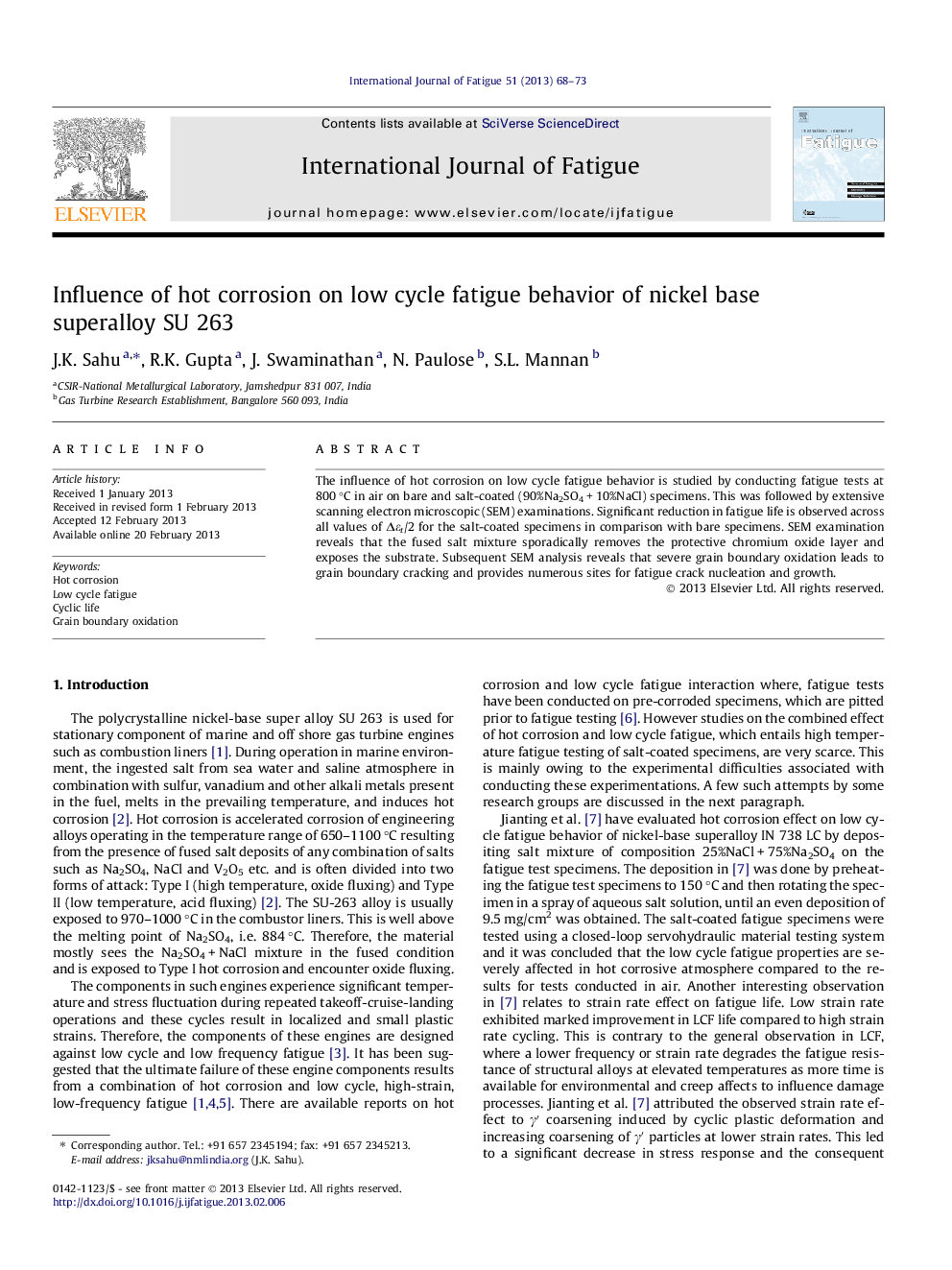| Article ID | Journal | Published Year | Pages | File Type |
|---|---|---|---|---|
| 777707 | International Journal of Fatigue | 2013 | 6 Pages |
The influence of hot corrosion on low cycle fatigue behavior is studied by conducting fatigue tests at 800 °C in air on bare and salt-coated (90%Na2SO4 + 10%NaCl) specimens. This was followed by extensive scanning electron microscopic (SEM) examinations. Significant reduction in fatigue life is observed across all values of Δεt/2 for the salt-coated specimens in comparison with bare specimens. SEM examination reveals that the fused salt mixture sporadically removes the protective chromium oxide layer and exposes the substrate. Subsequent SEM analysis reveals that severe grain boundary oxidation leads to grain boundary cracking and provides numerous sites for fatigue crack nucleation and growth.
► LCF life is reduced for all values of Δεt/2 in HC atmosphere compared to air. ► The hot salt deposit sporadically destroys the protective chromium oxide layer. ► The removal of chromium oxide layer leads to severe oxidation of grain boundaries. ► Fatigue cracks initiated at the oxidized grain boundaries leads to sudden collapse. ► The fatigue life is observed to be more affected at lower values of Δεt/2.
